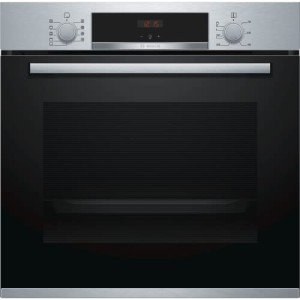The Rise of Built-In Ovens: A Seamless Approach to Modern Cooking
In contemporary kitchen areas, where design aesthetics mix flawlessly with performance, one appliance stands out as a true video game changer: the built-in oven. As house owners and chefs alike continue to look for innovative options that improve their cooking experience, built-in ovens have actually ended up being progressively popular. This short article explores the benefits, considerations, and patterns surrounding built-in ovens, highlighting why they are a vital feature in modern cooking areas.
What is buy built in oven -In Oven?
A built-in oven is a kitchen area appliance designed to be integrated into the cabinetry of a kitchen instead of standing alone. Unlike standard freestanding ovens, which can be moved and placed anywhere, built-in ovens come in different designs and sizes to fit particularly within designated spaces. Readily available in single or double setups, these ovens use a streamlined appearance that complements contemporary kitchen styles.
Advantages of Built-In Ovens
1. Space-Saving Design
One of the most attractive benefits of built-in ovens is their space-saving design. By incorporating the oven into cabinets, you can maximize important counter and floor area. This is especially useful in smaller sized kitchens, where taking full advantage of space is important. Built-in ovens can be set up at eye level, making them more accessible and lowering the need to bend down.
2. Visual Appeal
Built-in ovens add to a streamlined and cohesive kitchen style. Available in numerous surfaces-- such as stainless steel, black, white, and customized cabinets-- they can mix flawlessly into the general design. This aesthetic appeal boosts the cooking area's visual harmony and elevates the space, producing a modern-day and advanced atmosphere.
3. Improved Functionality
Numerous built-in ovens come equipped with innovative cooking technologies, such as convection cooking, steam ovens, and wise features. These improvements permit versatile cooking options, making it much easier to achieve professional-level results in your home. Smart built-in ovens can even link to Wi-Fi, enabling users to manage the oven remotely, get notices, and access a range of cooking programs and dishes.
4. Enhanced Ventilation
Due to the fact that built-in ovens can be integrated with kitchen hoods and ventilation systems, they can help keep much better air quality and minimize cooking smells. This is especially considerable for those who enjoy to prepare with aromatic spices and active ingredients, as a reliable ventilation system can keep the kitchen comfy and welcoming.
5. Modification Options
Built-in ovens use a large range of modification options to match specific cooking styles and needs. From professional-grade devices with several cooking modes to compact styles for smaller sized kitchen areas, house owners can pick the oven that fits their specific requirements. Numerous producers likewise offer personalized front panels, permitting you to match the oven's look to your cabinets for a genuinely unified appearance.
Considerations When Choosing a Built-In Oven
While built-in ovens have lots of benefits, there are very important factors to consider to keep in mind before purchasing:
1. Price
Built-in ovens generally include a greater price tag than their freestanding equivalents due to their design and setup requirements. It's important to factor in both the expense of the oven and any extra costs connected to kitchen cabinetry adjustments or installation.
2. Installation Requirements
Setting up a built-in oven often needs expert support, particularly if you need to modify existing cabinets. Ensure that you consider any costs associated with installation, including labor and possible cabinetry changes.
3. Size and Dimensions
Before buying a built-in oven, determine the designated space properly to guarantee a proper fit. Built-in ovens come in different sizes and configurations, so picking one that aligns with your needs and kitchen area design is vital.
4. Lifestyle and Usage
Consider your cooking routines and needs when selecting a built-in oven. If you frequently host big gatherings, a double oven might be more helpful. On the other hand, if you have a compact kitchen, a single-wall oven may be enough.
Trends in Built-In Ovens
The kitchen area home appliance market is continuously developing, and built-in ovens are not exempt from emerging trends. Some existing patterns consist of:
Smart Technology Integration: With the rise of wise home technology, built-in ovens now frequently include connectivity options. This enables users to monitor cooking development and change settings through mobile apps.

Energy Efficiency: As sustainability ends up being a top priority, many producers are buying energy-efficient built-in ovens that reduce energy intake while maintaining performance.
Multi-functional Designs: Built-in ovens now offer features such as air frying, slow cooking, and steaming, offering adaptability that fulfills a large range of cooking methods.
Conclusion
Built-in ovens undoubtedly represent a perfect mix of style, function, and convenience in today's cooking areas. As more property owners decide for this contemporary solution, the focus shifts to developing a cooking space that is as visually pleasing as it is practical. Whether you are developing a new home or renovating your cooking area, thinking about a built-in oven could raise your cooking experience and transform your cooking area into an elegant and functional sanctuary. With a range of choices available and continuous innovations in technology, built-in ovens stay a standout option for both novice cooks and culinary enthusiasts alike.
